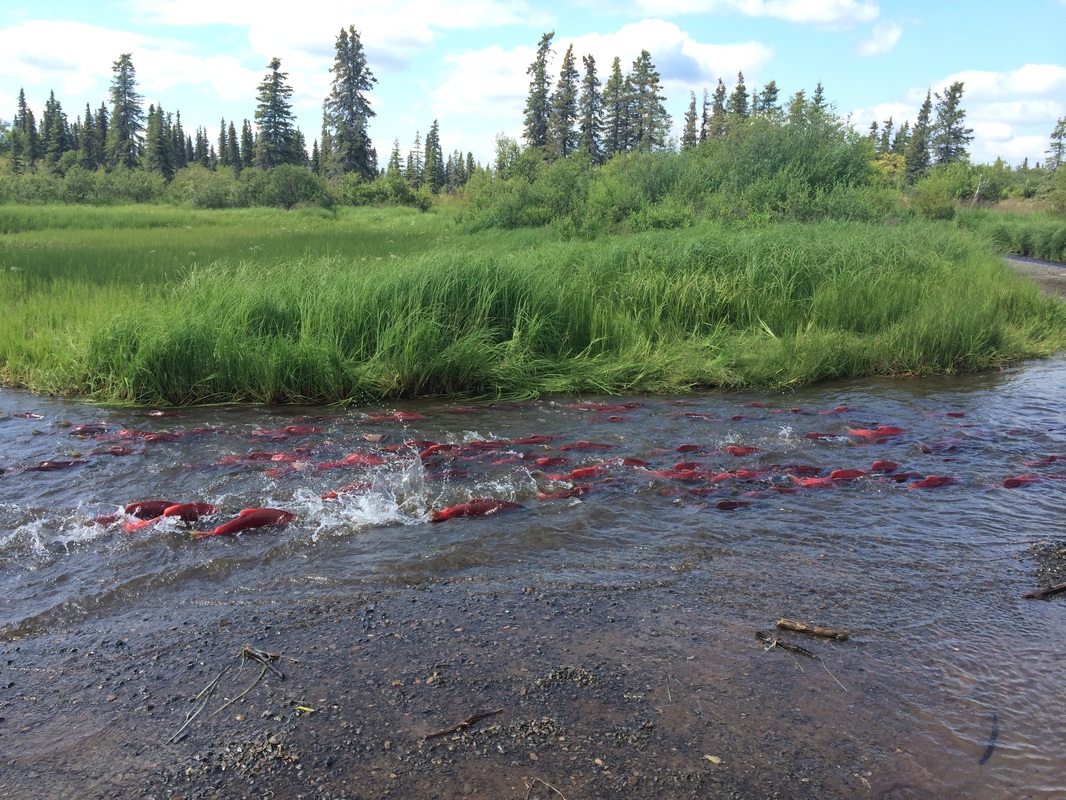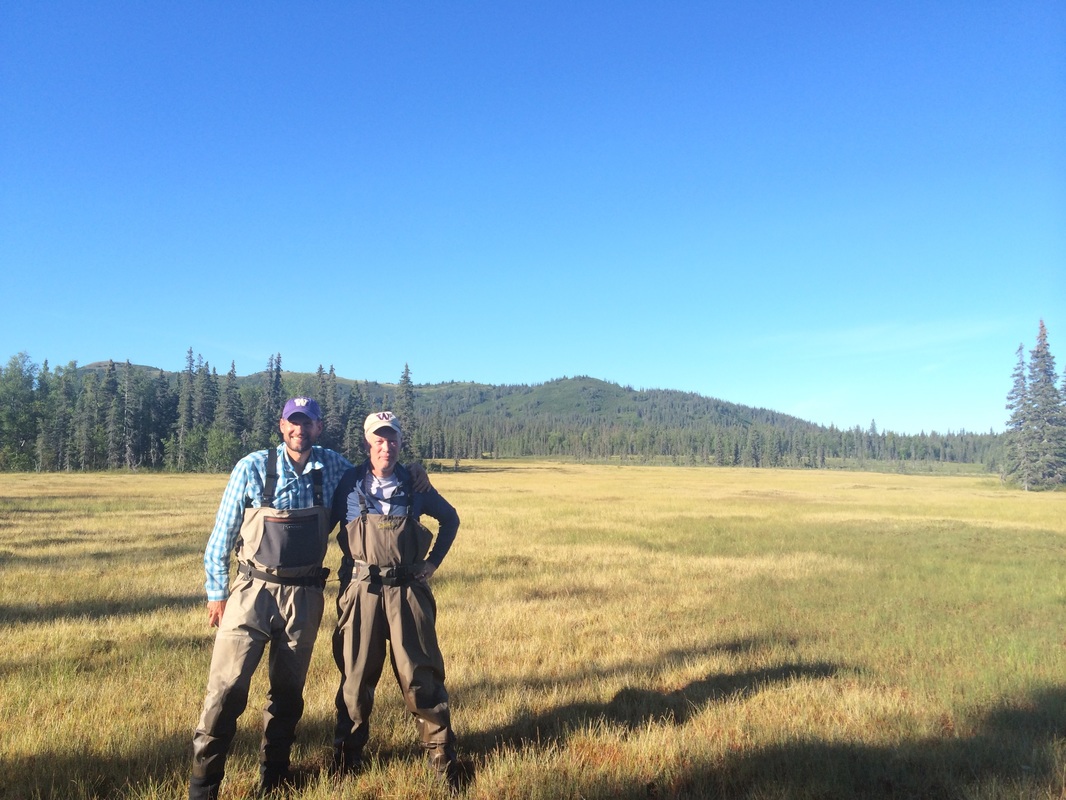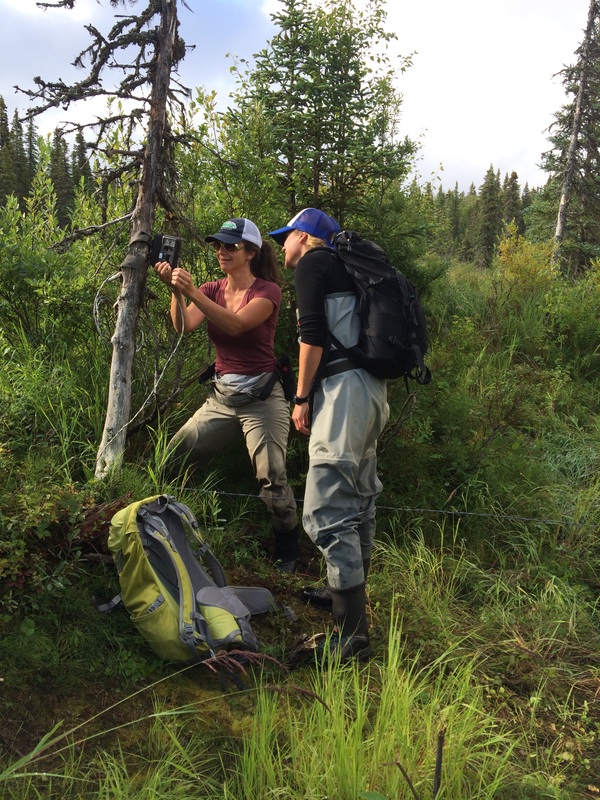| Sockeye salmon make the push into Happy Creek. Tom and I on the tundra near one of our bear wires on Whitefish Creek (Photo by Blakeley Adkins). Yep, Bristol Bay is a tough place to work. | Anne Hilborn (PhD student, Virginia Tech) and Blakeley Adkins (our bear research technician for the 2016 season) check one of the motion-activated video cameras for new bear footage. Here, on Eagle Creek, the camera is paired with a hair snagging wire, letting us match footage with deposited hairs to determine, for example, if the sample was left by a lone individual or a mother with cubs. |

|
|
Proudly powered by Weebly



 RSS Feed
RSS Feed